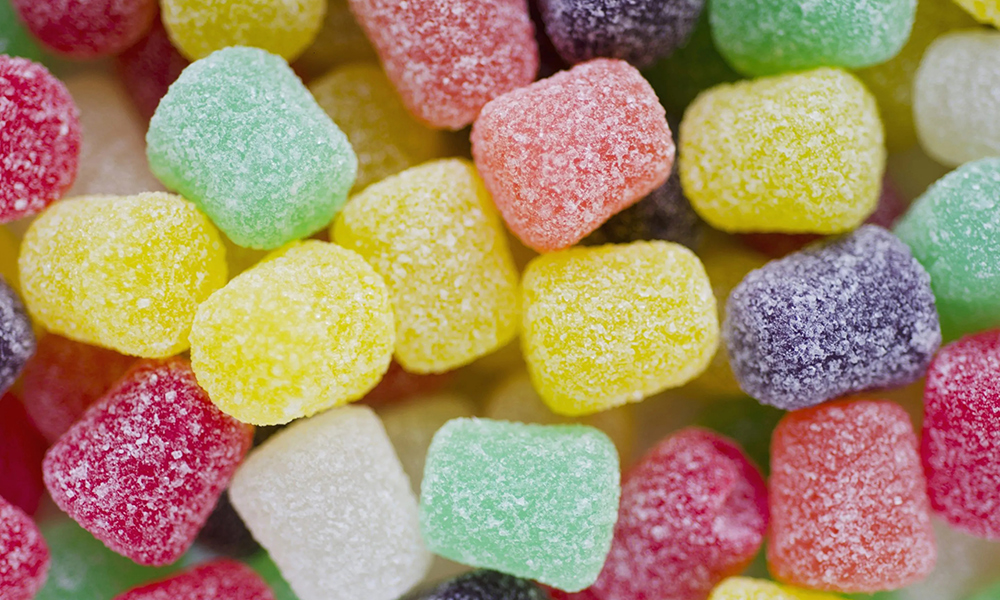
上周三,美國食品藥品監(jiān)督管理局(FDA)宣布,,將在美國的食品供應(yīng)中禁用一種名叫“3號紅”的色素,,原因是這種色素可能有致癌風(fēng)險。而在大約35年前,,美國已經(jīng)禁止在化妝品中使用這種色素,。
這種色素可以讓部分糖果、蛋糕和酒浸櫻桃呈現(xiàn)出亮紅色,。近日,,F(xiàn)DA批準(zhǔn)了2022年由二十多位食品安全與健康倡導(dǎo)者遞交的一份請愿書。在這份請愿書中,,他們要求FDA撤銷之前頒發(fā)的針對這種色素的使用許可,。
FDA表示,此次針對3號紅色素的禁令是“依法禁用”,,因?yàn)橐恍┭芯堪l(fā)現(xiàn),,這種色素會導(dǎo)致實(shí)驗(yàn)室里的小白鼠患癌。FDA官員們引用了一項(xiàng)名叫《德萊尼條款》的法規(guī),該法規(guī)要求FDA必須下令禁用任何已證實(shí)會導(dǎo)致人或動物患癌的添加劑,。
這種色素的學(xué)名叫做“赤蘚紅”,,又稱“3號紅”或者“紅3號”。從今以后,,美國的食品,、膳食補(bǔ)充劑和口服藥物(比如止咳糖漿)中將不得再使用“3號紅”??茖W(xué)界早已發(fā)現(xiàn)老鼠食用“3號紅”后有患癌風(fēng)險,,早在30多年前,F(xiàn)DA就已拒絕授權(quán)在化妝品和外用藥物中使用“3號紅”,。
FDA副局長吉姆·瓊斯表示:“FDA正在采取行動取消在食品和口服藥品中對‘3號紅’色素的授權(quán),。因?yàn)橛凶C據(jù)表明,在實(shí)驗(yàn)室中,,雄性老鼠在攝取高劑量‘3號紅’后會致癌,。當(dāng)然,要強(qiáng)調(diào)的是,,實(shí)驗(yàn)用鼠攝取‘3號紅’的那種方式,,在人類身上是不會出現(xiàn)的?!?/p>
根據(jù)FDA的這項(xiàng)禁令,,美國各大食品制造商必須在 2027 年1月份以前完全禁用“3號紅”,口紅藥物制造商則需在2028年1月份前完全禁用“3號紅”,。目前,,世界上仍在一些國家允許在特定領(lǐng)域使用“3號紅”,但進(jìn)口到美國的食品則必須遵守美國的這項(xiàng)新規(guī),。
對FDA的這項(xiàng)禁令,,消費(fèi)者權(quán)益人士表示了歡迎。
“FDA此舉值得歡迎,,雖然姍姍來遲,,因?yàn)樗鼟仐壛艘恍┎缓侠淼摹p標(biāo)’做法。比如‘3號紅’之前已經(jīng)被禁止用于口紅中,,但是它卻可以用在糖果中,。”此次請愿的牽頭機(jī)構(gòu)——美國公眾利益科學(xué)中心主任彼得?盧里博士表示,。
至于食品加工商們會不會采用法律行動對抗FDA的這項(xiàng)禁令,,現(xiàn)在還有待觀察,畢竟目前尚無證據(jù)表明人類食用這種色素也會致癌,。不過在12月份的一次聽證會上,,F(xiàn)DA局長羅伯特?卡利夫博士暗示了這種風(fēng)險是存在的,。
12 月 5 日,他在聽證會上對國會議員們說:“每次我們禁止什么東西,,都會鬧上法庭,。如果我們沒有科學(xué)證據(jù),就會在法庭上敗訴,?!?/p>
FDA雖然在1990年拒絕批準(zhǔn)“3號紅”色素用于化妝品和外用藥物,但仍允許其用于食品和口服藥物,。對此,,F(xiàn)DA官網(wǎng)給出的解釋是,這是因?yàn)楫?dāng)時的研究表明,,“3號紅”讓老鼠致癌的方式并不適用于人類,。“所以FDA并未采取行動撤銷‘3號紅’在食品中的使用許可,?!?。
很多年來,,美國的一些健康倡導(dǎo)者一直要求FDA重新考慮這個問題,其中就包括2022年由公眾利益科學(xué)中心帶頭發(fā)起的這次請愿,。去年11月,,美國國會有近20位議員再次聯(lián)名致信,要求FDA禁用“3號紅”,。
在這封信中,,議員們援引了《德萊尼條款》,并表示禁用“3號紅”對保護(hù)兒童健康尤為重要,,因?yàn)榘大w重比例計算,,兒童攝入的這種色素比成年人更多。
這封信還寫道:“FDA應(yīng)迅速采取行動,,保護(hù)美國青少年免受這種有害色素侵害,。它的作用只是給食品和飲料增添一點(diǎn)亮紅色,但是任何美觀上的理由,,都不足以成為在食品行業(yè)中使用致癌物質(zhì)的借口,。”
歐洲,、澳大利亞和新西蘭等地也以基本禁用了“3號紅”,,只在某些櫻桃制品中例外。美國加州將從2027年1月起禁用“3號紅”,。而田納西州,、阿肯色州和印第安納州的議員們也已提交了限制使用某些色素的提案,,特別是要在食品和學(xué)校提供的餐食中禁止使用某些色素。
對此,,國際食用色素制造商協(xié)會指出,,按人類通常的攝入量來看,“3號紅”是安全的,。該協(xié)會還提到了聯(lián)合國和世衛(wèi)組織進(jìn)行的一些研究,,特別是2018年的一項(xiàng)科學(xué)評估曾經(jīng)肯定了“3號紅”用于食品的安全性。
據(jù)圣路易斯市的一家人工色素公司Sensient Food Colors介紹,,目前,,美國不少食品加工商已經(jīng)調(diào)整了產(chǎn)品配方,不再使用“3號紅”,,而是用其他色素替代,。常用的替代品有甜菜汁、胭脂紅(由胭脂紅蟲制成),,以及從紫薯,、紅蘿卜、紅甘藍(lán)等天然果蔬中提取的紅色素等,。(財富中文網(wǎng))
美聯(lián)社記者金伯利?克魯西對本報道亦有貢獻(xiàn),。
譯者:樸成奎
上周三,美國食品藥品監(jiān)督管理局(FDA)宣布,,將在美國的食品供應(yīng)中禁用一種名叫“3號紅”的色素,,原因是這種色素可能有致癌風(fēng)險。而在大約35年前,,美國已經(jīng)禁止在化妝品中使用這種色素,。
這種色素可以讓部分糖果、蛋糕和酒浸櫻桃呈現(xiàn)出亮紅色,。近日,,F(xiàn)DA批準(zhǔn)了2022年由二十多位食品安全與健康倡導(dǎo)者遞交的一份請愿書。在這份請愿書中,,他們要求FDA撤銷之前頒發(fā)的針對這種色素的使用許可,。
FDA表示,此次針對3號紅色素的禁令是“依法禁用”,,因?yàn)橐恍┭芯堪l(fā)現(xiàn),,這種色素會導(dǎo)致實(shí)驗(yàn)室里的小白鼠患癌。FDA官員們引用了一項(xiàng)名叫《德萊尼條款》的法規(guī),,該法規(guī)要求FDA必須下令禁用任何已證實(shí)會導(dǎo)致人或動物患癌的添加劑,。
這種色素的學(xué)名叫做“赤蘚紅”,又稱“3號紅”或者“紅3號”,。從今以后,,美國的食品,、膳食補(bǔ)充劑和口服藥物(比如止咳糖漿)中將不得再使用“3號紅”??茖W(xué)界早已發(fā)現(xiàn)老鼠食用“3號紅”后有患癌風(fēng)險,,早在30多年前,F(xiàn)DA就已拒絕授權(quán)在化妝品和外用藥物中使用“3號紅”,。
FDA副局長吉姆·瓊斯表示:“FDA正在采取行動取消在食品和口服藥品中對‘3號紅’色素的授權(quán),。因?yàn)橛凶C據(jù)表明,在實(shí)驗(yàn)室中,,雄性老鼠在攝取高劑量‘3號紅’后會致癌,。當(dāng)然,要強(qiáng)調(diào)的是,,實(shí)驗(yàn)用鼠攝取‘3號紅’的那種方式,,在人類身上是不會出現(xiàn)的?!?/p>
根據(jù)FDA的這項(xiàng)禁令,,美國各大食品制造商必須在 2027 年1月份以前完全禁用“3號紅”,口紅藥物制造商則需在2028年1月份前完全禁用“3號紅”,。目前,,世界上仍在一些國家允許在特定領(lǐng)域使用“3號紅”,但進(jìn)口到美國的食品則必須遵守美國的這項(xiàng)新規(guī),。
對FDA的這項(xiàng)禁令,,消費(fèi)者權(quán)益人士表示了歡迎。
“FDA此舉值得歡迎,,雖然姍姍來遲,因?yàn)樗鼟仐壛艘恍┎缓侠淼摹p標(biāo)’做法,。比如‘3號紅’之前已經(jīng)被禁止用于口紅中,,但是它卻可以用在糖果中?!贝舜握堅傅臓款^機(jī)構(gòu)——美國公眾利益科學(xué)中心主任彼得?盧里博士表示,。
至于食品加工商們會不會采用法律行動對抗FDA的這項(xiàng)禁令,現(xiàn)在還有待觀察,,畢竟目前尚無證據(jù)表明人類食用這種色素也會致癌,。不過在12月份的一次聽證會上,F(xiàn)DA局長羅伯特?卡利夫博士暗示了這種風(fēng)險是存在的,。
12 月 5 日,,他在聽證會上對國會議員們說:“每次我們禁止什么東西,都會鬧上法庭,。如果我們沒有科學(xué)證據(jù),,就會在法庭上敗訴,。”
FDA雖然在1990年拒絕批準(zhǔn)“3號紅”色素用于化妝品和外用藥物,,但仍允許其用于食品和口服藥物,。對此,F(xiàn)DA官網(wǎng)給出的解釋是,,這是因?yàn)楫?dāng)時的研究表明,,“3號紅”讓老鼠致癌的方式并不適用于人類?!八訤DA并未采取行動撤銷‘3號紅’在食品中的使用許可,。” ,。
很多年來,,美國的一些健康倡導(dǎo)者一直要求FDA重新考慮這個問題,其中就包括2022年由公眾利益科學(xué)中心帶頭發(fā)起的這次請愿,。去年11月,,美國國會有近20位議員再次聯(lián)名致信,要求FDA禁用“3號紅”,。
在這封信中,,議員們援引了《德萊尼條款》,并表示禁用“3號紅”對保護(hù)兒童健康尤為重要,,因?yàn)榘大w重比例計算,,兒童攝入的這種色素比成年人更多。
這封信還寫道:“FDA應(yīng)迅速采取行動,,保護(hù)美國青少年免受這種有害色素侵害,。它的作用只是給食品和飲料增添一點(diǎn)亮紅色,但是任何美觀上的理由,,都不足以成為在食品行業(yè)中使用致癌物質(zhì)的借口,。”
歐洲,、澳大利亞和新西蘭等地也以基本禁用了“3號紅”,,只在某些櫻桃制品中例外。美國加州將從2027年1月起禁用“3號紅”,。而田納西州,、阿肯色州和印第安納州的議員們也已提交了限制使用某些色素的提案,特別是要在食品和學(xué)校提供的餐食中禁止使用某些色素,。
對此,,國際食用色素制造商協(xié)會指出,按人類通常的攝入量來看,,“3號紅”是安全的,。該協(xié)會還提到了聯(lián)合國和世衛(wèi)組織進(jìn)行的一些研究,,特別是2018年的一項(xiàng)科學(xué)評估曾經(jīng)肯定了“3號紅”用于食品的安全性。
據(jù)圣路易斯市的一家人工色素公司Sensient Food Colors介紹,,目前,,美國不少食品加工商已經(jīng)調(diào)整了產(chǎn)品配方,不再使用“3號紅”,,而是用其他色素替代,。常用的替代品有甜菜汁、胭脂紅(由胭脂紅蟲制成),,以及從紫薯,、紅蘿卜、紅甘藍(lán)等天然果蔬中提取的紅色素等,。(財富中文網(wǎng))
美聯(lián)社記者金伯利?克魯西對本報道亦有貢獻(xiàn),。
譯者:樸成奎
U. S. regulators on Wednesday banned the dye called Red 3 from the nation’s food supply, nearly 35 years after it was barred from cosmetics because of potential cancer risk.
Food and Drug Administration officials granted a 2022 petition filed by two dozen food safety and health advocates, who urged the agency to revoke authorization for the substance that gives some candies, snack cakes and maraschino cherries a bright red hue.
The agency said it was taking the action as a “matter of law” because some studies have found that the dye caused cancer in lab rats. Officials cited a statute known as the Delaney Clause, which requires FDA to ban any additive found to cause cancer in people or animals.
The dye is known as erythrosine, FD&C Red No. 3 or Red 3. The ban removes it from the list of approved color additives in foods, dietary supplements and oral medicines, such as cough syrups. More than three decades ago, the FDA declined to authorize use of Red 3 in cosmetics and externally applied drugs because a study showed it caused cancer when eaten by rats.
“The FDA is taking action that will remove the authorization for the use of FD&C Red No. 3 in food and ingested drugs,” said Jim Jones, the FDA’s deputy commissioner for human foods. “Evidence shows cancer in laboratory male rats exposed to high levels of FD&C Red No.3. Importantly, the way that FD&C Red No. 3 causes cancer in male rats does not occur in humans.”
Food manufacturers will have until January 2027 to remove the dye from their products, while makers of ingested drugs have until January 2028 to do the same. Other countries still allow for certain uses of the dye, but imported foods must meet the new U.S. requirement.
Consumer advocates praised the decision.
“This is a welcome, but long overdue, action from the FDA: removing the unsustainable double standard in which Red 3 was banned from lipstick but permitted in candy,” said Dr. Peter Lurie, director of the group Center for Science in the Public Interest, which led the petition effort.
It’s not clear whether the ban will face legal challenges from food manufacturers because evidence hasn’t determined that the dye causes cancer when consumed by humans. At a hearing in December, FDA Commissioner Dr. Robert Califf suggested that’s a risk.
“When we do ban something, it will go to court,” he told members of Congress on Dec. 5. “And if we don’t have the scientific evidence, we will lose in court.”
When the FDA declined to allow Red 3 in cosmetics and topical drugs in 1990, the color additive was already permitted in foods and ingested drugs. Because research showed then that the way the dye causes cancer in rats does not apply to humans, “the FDA did not take action to revoke the authorization of Red No. 3 in food,” the agency has said on its website.
Health advocates for years have asked the FDA to reconsider that decision, including the 2022 petition led by CSPI. In November, nearly two dozen members of Congress sent a letter demanding that FDA officials ban Red 3.
Lawmakers cited the Delaney Clause and said the action was especially important to protect children, who consume more of the dye on a bodyweight basis than adults, the lawmakers said.
“The FDA should act quickly to protect the nation’s youth from this harmful dye, used simply to give food and drinks a bright red color,” the letter said. “No aesthetic reason could justify the use of a carcinogen in our food supply.”
Red 3 is banned for food use in Europe, Australia and New Zealand except in certain kinds of cherries. The dye will be banned in California starting in January 2027, and lawmakers in Tennessee, Arkansas and Indiana have filed proposals to limit certain dyes, particularly from foods offered in public schools.
The International Association of Color Manufacturers defends the dye, saying that it is safe in levels typically consumed by humans. The group points to research by scientific committees operated by the United Nations and the World Health Organization, including a 2018 review that reaffirmed the safety of Red 3 in food.
Some food manufacturers have already reformulated products to remove Red 3. In its place they use beet juice; carmine, a dye made from insects; and pigments from foods such as purple sweet potato, radish and red cabbage, according to Sensient Food Colors, a St. Louis-based supplier of food colors and flavorings.
___
Associated Press writer Kimberlee Kruesi in Nashville, Tennessee, contributed to this report.






